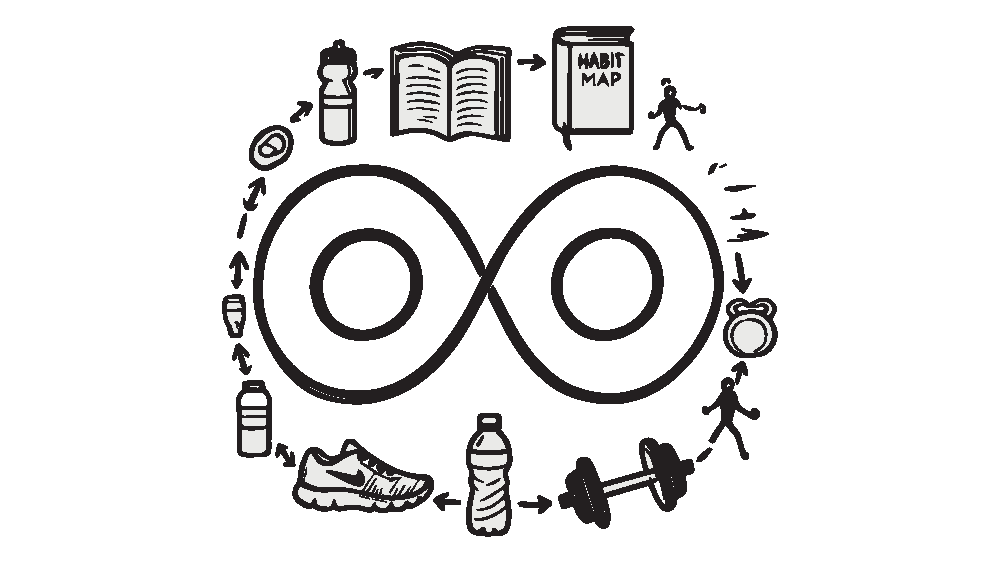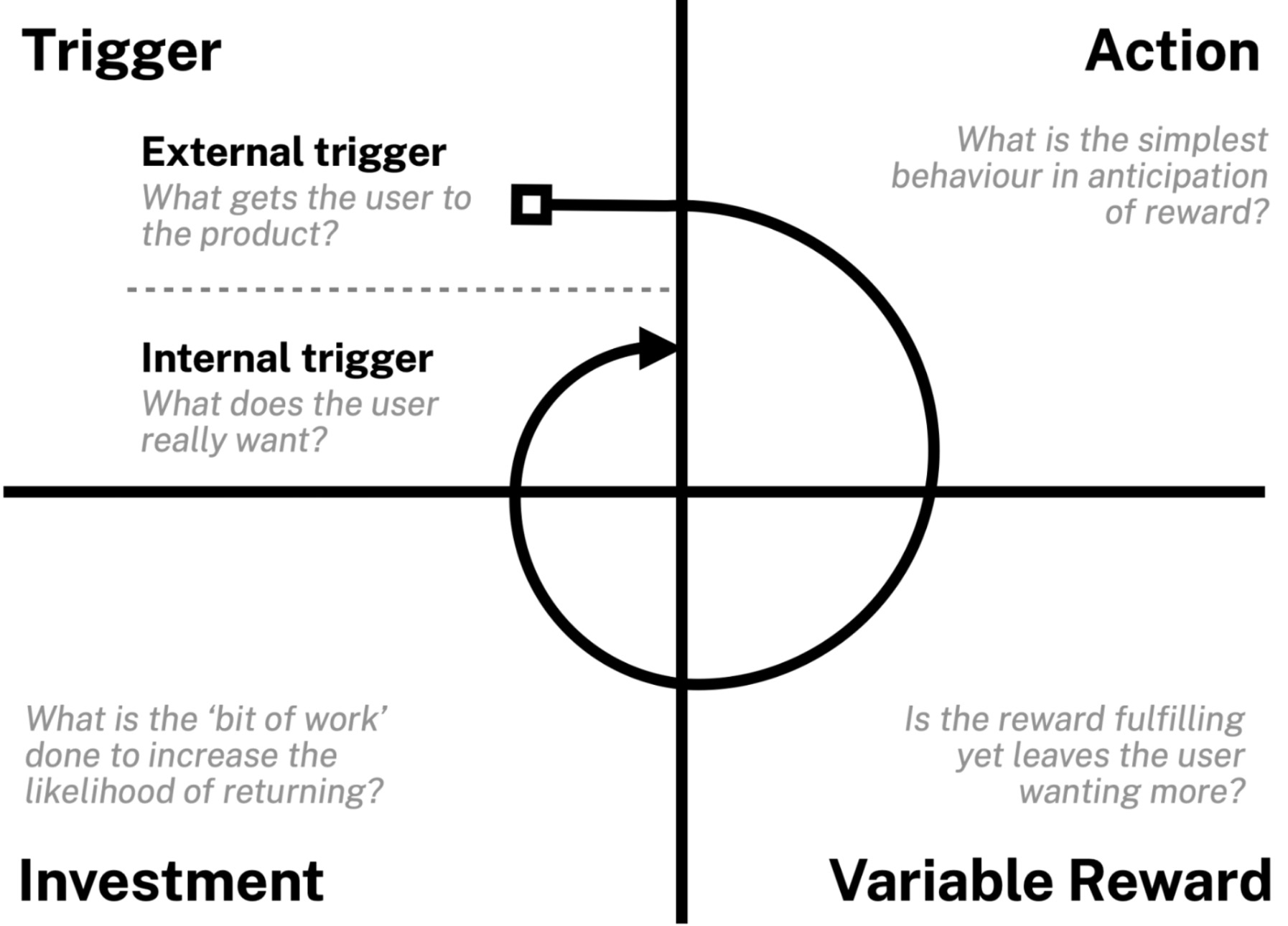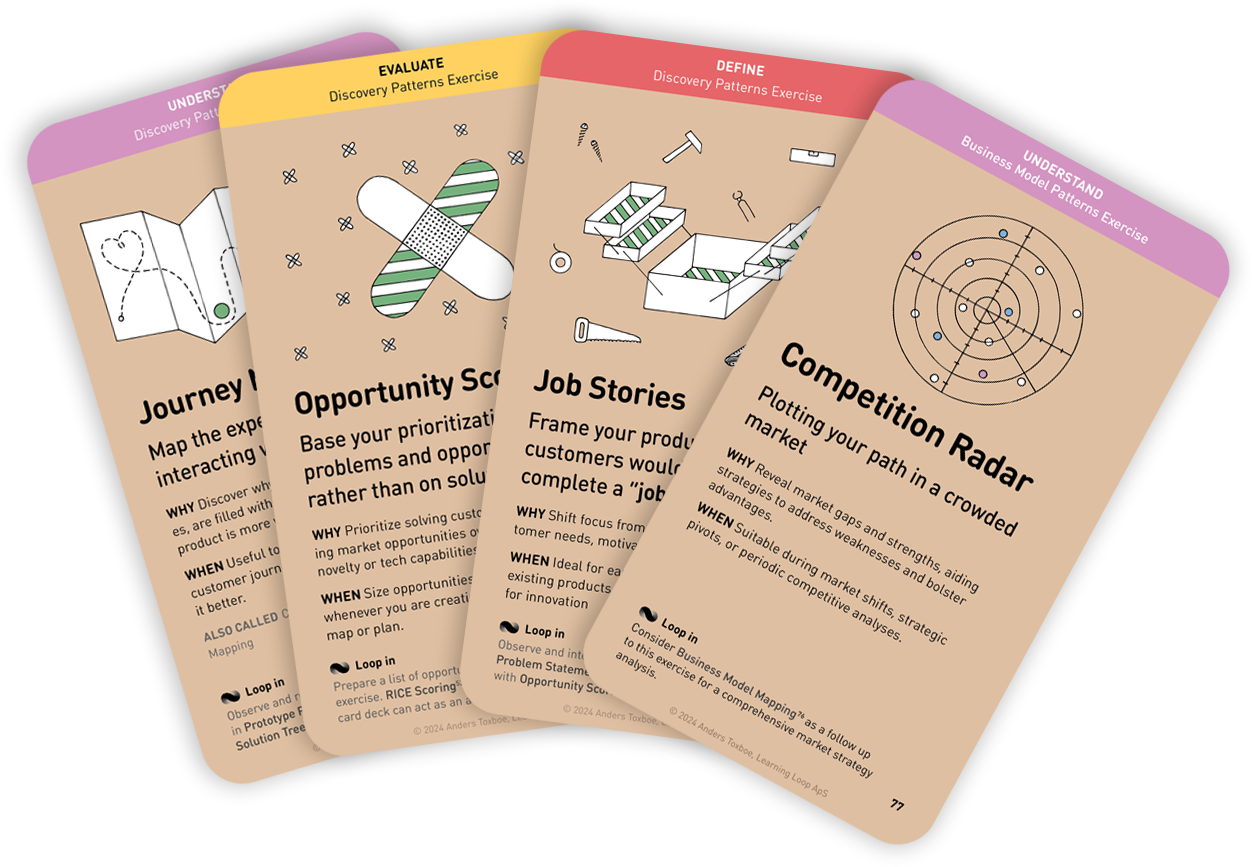
Why: Construct habit loops that connect with both the intrinsic and extrinsic motivations of the users to build habit-forming products.
When: Use to refine a create products with lasting user retention and interaction.
Empower design teams to create products that are inherently engaging and habit-forming, using Nir Eyal’s Hooked Canvas. The canvas integrates 4 key behavioral science principles to understand and influence user behaviors, thereby enhancing user retention and loyalty.
By focusing on what actions users need to take, what rewards will satisfy and motivate them, what triggers will prompt these actions at the right moments, and what investments will set the stage for future engagement, design teams can create products that are inherently more engaging and impactful.
Integrating behavioral insights into the design process allows teams to ideate and create products that are more empathetic, user-centric, and effective in fostering long lasting positive behavioral change.
Instructions for running this play
- Introduce the exercise and the Hooked Canvas
Introduce the Hooked model: Trigger, Action, Reward, and Investment – emphasizing their interconnectedness in habit formation. Discuss how each component contributes to creating a loop that consistently draws users back to the product.
- Define the target habit
Lead participants to identify the habit (the action) they want users to perform on a frequent and recurring basis. Emphasize how this action is the essential behavior you want users to adopt, and how it aligns with the product’s objectives. Consider using Focus Mapping of Behavior Scoring for this. Ask:
With the anticipation of reward, what is the simplest behavior users can do? - List and rank rewards
Conduct a 10-minute individual silent brainstorm, asking participants to list potential rewards that can be linked to the identified action. Use the Persuasive Patterns card deck for inspiration. Let participants present their findings and rank each reward asking the question:
Is the reward fulfilling and leaves the user wanting more? \ - Determine investments
Discuss how user investments, whether in time, data, effort, social capital, or money, pave the way for subsequent triggers and interactions. Conduct a 10-minute individual silent brainstorm to direct participants to decide what bit of work the user can do to increase the likelihood of the next pass through the cycle. It should be closely connected to the action and reward. - Discover triggers
Instruct participants to identify both external and internal triggers that are synchronous with the action. Discuss how effective triggers should be timely, relevant, clear, and inspiring. - Prototype and test.
A collection of workshop exercises that will help you ditch dull meetings and facilitate with confidence. It will help you master the design process and have more productive time with your team. The card deck will be ready for purchase in the end of 2026 and is now undergoing rigorous testing.
Reserve your deck!- The Hooked Model: How to Manufacture Desire in 4 Steps by Nir Eyal
- Eyal, N. (2014). Hooked: How to build habit-forming products. Portfolio.
